Éric Bellion: Stand As One – A boat made by sailors, for sailors
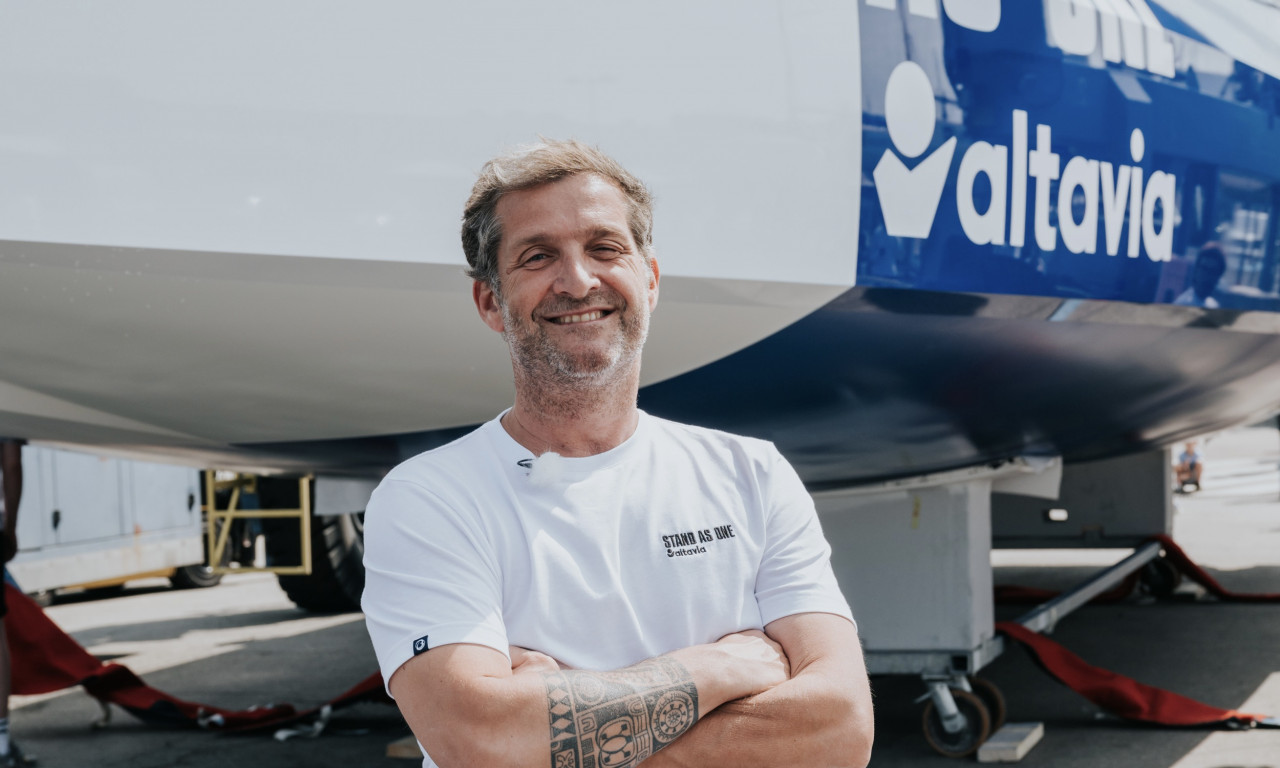
You get used to hearing about people’s passion for the ocean, for sailing and for boats when you talk to IMOCA skippers, but Éric Bellion still stands out – a guy who radiates positive energy for his chosen vocation.
Right now the Versailles-born 47-year-old is on cloud nine, as he celebrates the launch of his new IMOCA, Stand as One, a boat for the Vendée Globe that presents a fascinating – even revolutionary – alternative to the current vogue for foiling.
The first IMOCA hull designed by the French naval architect David Raison, who developed scow bows in the Mini class, Stand As One has similar hull features to the latest IMOCAs, but it has no foils and will sail with daggerboards.
In a concept driven by the thinking of Jean le Cam, the idea has been to focus on what is really required to be competitive in the Vendée Globe – a race that will inevitably see considerable upwind and light-air work, as well as heavy-air reaching and downwind sailing.
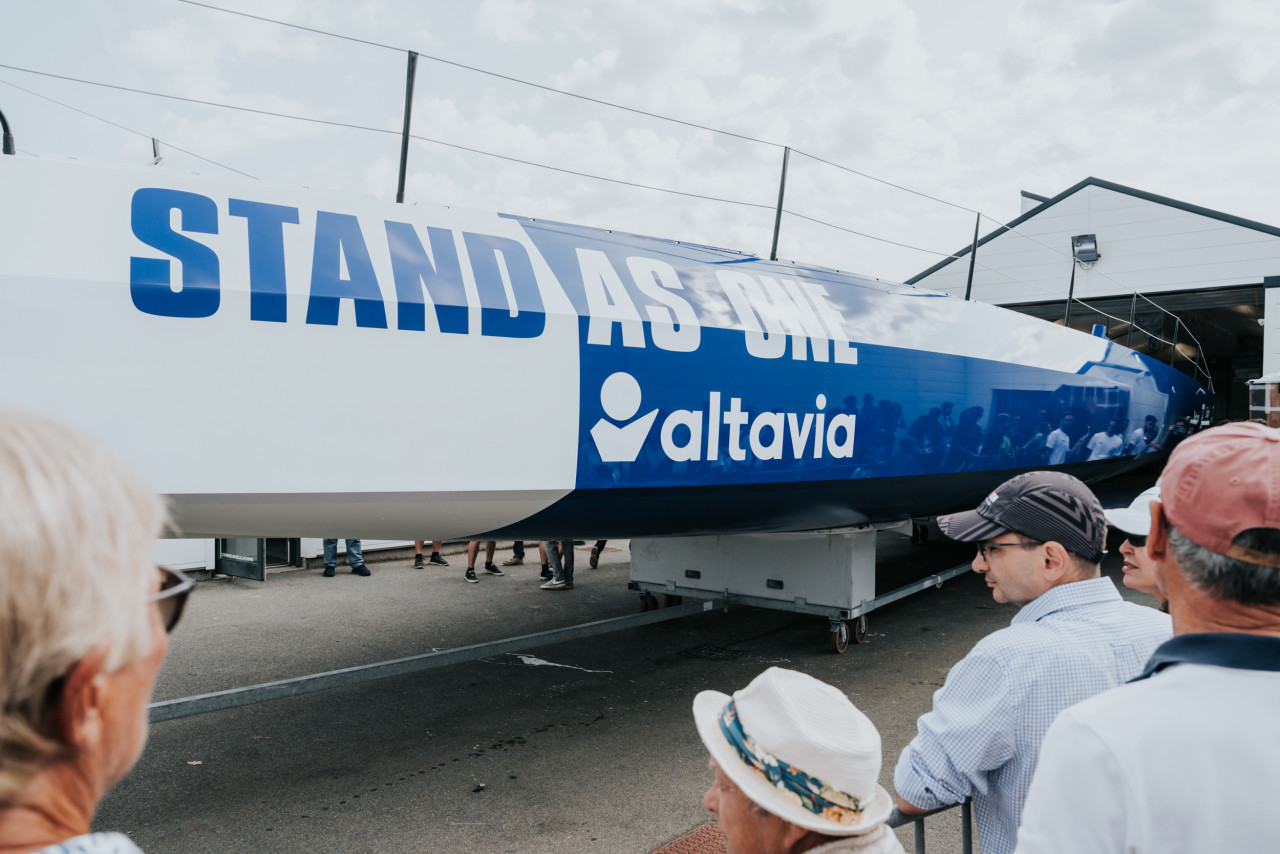
“We wanted to create a very simple IMOCA that is cheap, efficient and reliable,”explains Bellion, who finished top rookie in his first and only previous Vendée Globe in 2016/’17. “Our vision is revolutionary, but not because of us but because all the other new boats are very extreme because of the foiling choice. What we did with Jean is we asked a very important question: What do we need for performance on the Vendee Globe?”
So this boat will not be contending for 24-hour monohull distance records – it will be aimed at achieving fast averages against its foiling rivals. “We wanted a boat with a max average speed and a boat that is reliable and fast all the time,” adds Bellion. “Never very fast, but fast all the time – fast upwind and downwind and on every wind angle.
“In a race like the Vendée Globe – which is our purpose,”he continues, “we think we are going to be very competitive because this is a boat made by sailors for sailors, a boat that we can push to 90-100% and a boat that will be reliable. All the other new boats have gone in the same direction – max speed and huge foils – and we have gone the other way – simplicity and lightness.”
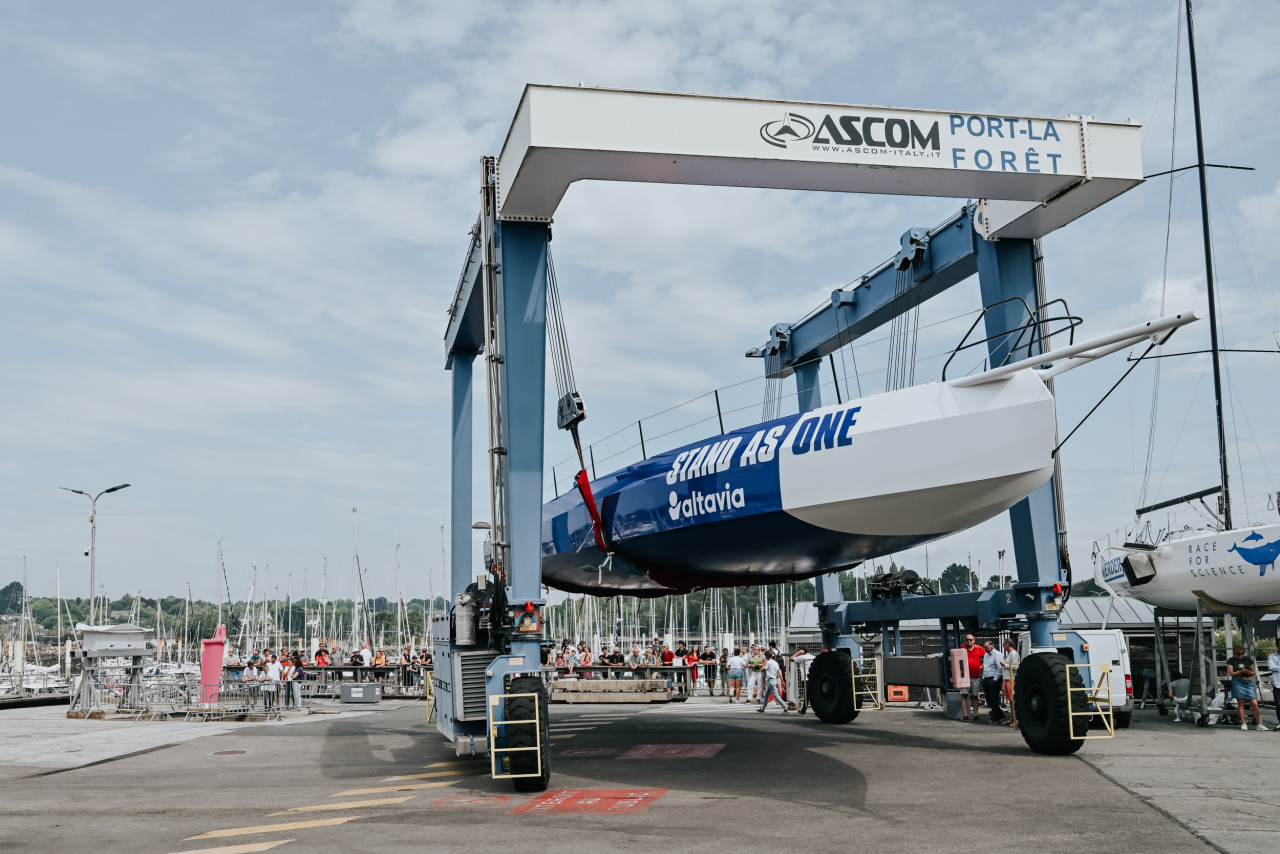
Bellion’s new boat is not only about daggerboards as against foils, it is also about Le Cam, Bellion and team manager Marie Lattanzio’s vision of creating a two-boat team. Stand As One, which was built at the Persico yard in Italy, will be followed by the launch of an identical sistership for Le Cam in September, making this the first two-boat team in IMOCA featuring identical hulls and appendages. (Up to two more boats may be added to the stable in the build-up to the 2028 Vendée Globe).
Bellion says this can be a game-changer as the two skippers devote time on the water next year to optimising the two-boats, one against the other. “It means that when my boat is in the shipyard, I can sail Jean’s boat and vice versa,” says Bellion. “And it means that when we develop something good on my boat, we can do the same thing on Jean’s boat. The Vendée Globe is a race of time and so, with two identical boats, we gain time...”
This has also been a cost-effective programme with the total design, build and fit-out cost, ready for sailing, coming in at around €5 million. According to Bellion, this compares very well with the latest foilers, which he estimates are costing up to €8 million or more. That is just one of the many reasons why this charming skipper is so delighted with the way his team has come together to produce this new IMOCA.
“I am always thinking about the next steps,” explains Bellion, “But, for sure, I am really happy about the amazing job we have done and I am proud too because we proved that we can be a small team that can achieve a big dream, like building our own boat. It’s a dream for every sailor and building your own boat for the Vendée Globe is really a dream come true for me.”
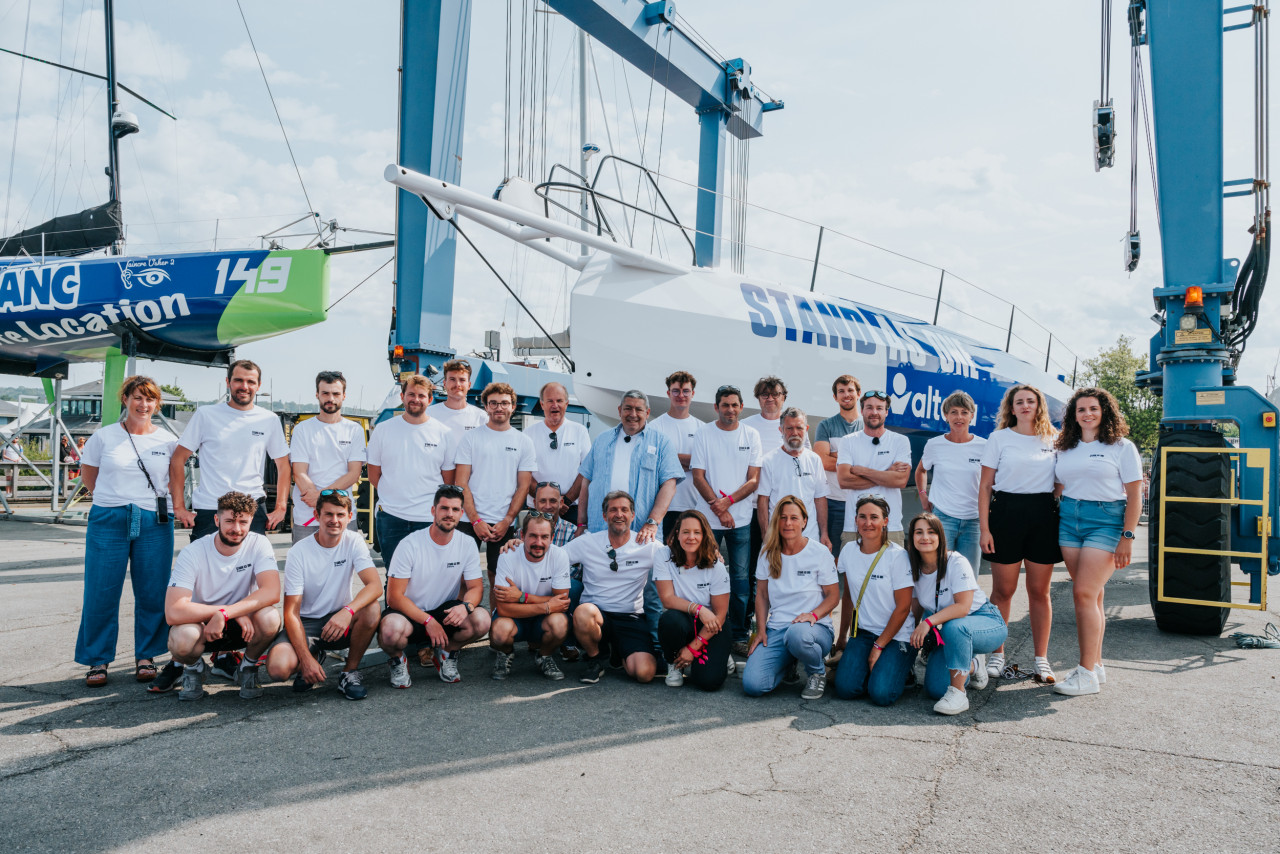
Bellion is outspoken about the fact that, in his view, the latest IMOCAs leave their skippers almost detached from the ocean they are sailing in, with their enclosed cockpits. Stand As One is open at the back. “I want to see the ocean, I want to see the birds, the moon, the sunset and the sunrise,” says Bellion. “What is the point of doing the Vendée Globe, you know? What is the point of going out to sea, if you don’t see the sea?”
Having skipped the last Vendée Globe and now 47 years old, you might wonder about Bellion’s appetitive for testing himself again on the solo global racecourse. He makes a very interesting point. He says his first Vendée Globe – which was his first solo ocean race – was a true voyage into the unknown. In 2024, he says, the drive and ambition will be just the same, but things will be very different for him in one important respect.
“Of course, it’s not the same. I don’t have the same relationship I had last time with fear,” he explains. “When I prepared for the Vendée Globe last time, the race was my first solo race. And so preparing for it, every day I was chasing the fear. It’s not the same any more – I don’t have the same relationship with fear. Fear is now my ally and I do things with more serenity now...”
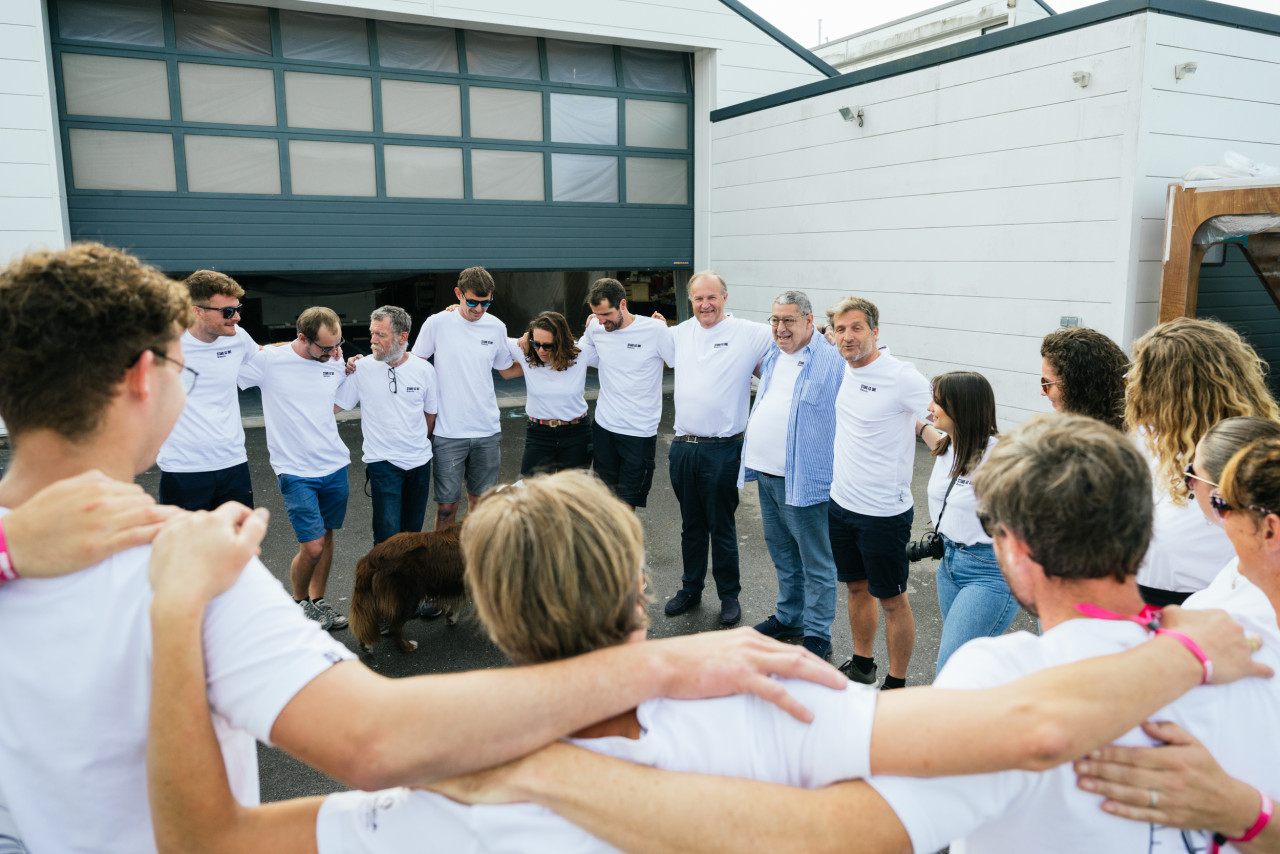
In the last race Bellion’s boat was called Comme Un Seul Homme. This time he has chosen the English language for the same name, reflecting the interests of one of his new sponsors, the American company Workday Inc. It also reflects the desire of this ambitious skipper to promote his activities internationally, something that informs his plans to take part in the next Ocean Race. “We want to do The Ocean Race,” confirms Bellion who attended the start of the current race in Alicante in January, “and we want to go international with all the causes we work with.”
Stands As One’s first race – when Bellion will be joined by Martin Le Pape, his co-skipper for the season including the Transat Jacques Vabre – will be the 605-mile Rolex Fastnet Race, which starts from Cowes on July 22nd.
Ed Gorman
Photos Yves Quéré
Teams info
After a stunning 2025 season Sam Goodchild is the IMOCA Globe Series Champion for the second time
After a long season at the top of the IMOCA fleet that featured three race wins, Great Britain’s Sam Goodchild is for the second time in three years the IMOCA Globe Series Champion.
•••Quel rôle peut jouer la course au large dans la transformation du transport international ? Avec Pie…
Pour ce 10ᵉ épisode de Transitions, enregistré au Havre lors du départ de la Transat Café L'Or, nous recevons Jeremy Pochman, PDG de 11th Hour Racing, et Pierre-Antoine Morvan, responsable du pôle course au large et supe…
•••